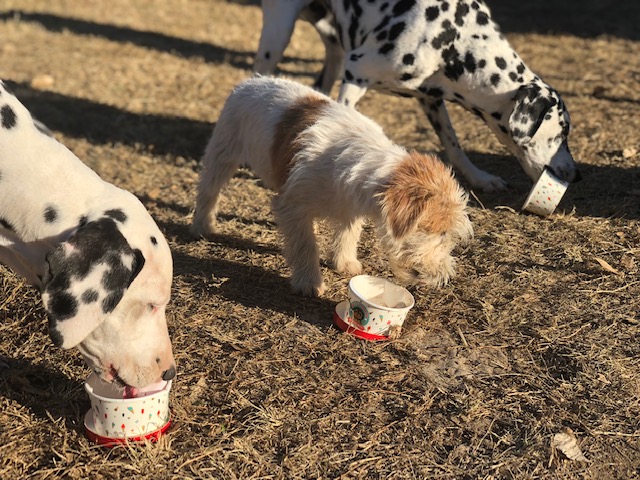Grain free dog food is a very hot category in doggie-land at the moment. You can tell its gaining traction when the major brands start to devote increasing time, energy (and marketing $$) into it. The grain free dog food trend follows hot on the heels of the paleo “revolution” that swept through human nutrition a few years ago. For many people, the paleo and similar diets opened their eyes up to the impacts certain foods had on their overall health and wellbeing.
The paleo diet essentially refers to eating whole, minimally processed foods and avoiding grain and dairy products. There’s not much wrong with the prescription, provided you don’t go grabbing the wrong end of the stick. Following a paleo diet wasn’t and isn’t about consuming large hunks of meat as its detractors sometimes tout. It’s about basing your diet largely on plants, consuming sensible portions of protein and, most importantly, weaning yourself off the consumption of highly processed and carbohydrate laden foods.

What tends to happen though, when folks first embark on a paleo’ish lifestyle, is that they seek out palatable alternatives to the highly processed, carbohydrate laden foods they once enjoyed. So instead of consuming that wheat flour based cake or biscuit, now they are squaffing down a banana flour or tapioca flour alternative. The highly refined white sugar is replaced with an addiction to dates (still sugar). And thus the benefits that can come from a wholefood, minimally processed diet, are largely missed. All the grains and sugar that are being carefully avoided are replaced by not so lesser evil carbohydrate counterparts. Carbohydrates are not the enemy, but most people eat too much of them.
Now we see this being repeated in the nutrition of our pooches. People are becoming aware that perhaps their dog eating kibble based entirely on wheat flour is quite a long way removed from what their wild ancestors ate. It stands to reason that, if we humans don’t feel so great existing on foods we didn’t evolve to eat, that our canine counterparts might not too. And so people are looking for alternatives. Grain is the enemy. Grain-free is on trend.
But is grain-free really what we should be looking for?
Dogs in the wild consume a prey based diet. There is a bit of incidental grazing on berries, grass, bird poo and the like. But the majority is from prey they have killed (or scavenged). Meat, bone, offal. They have to work hard for their food, and their food is low in carbohydrate. Keeping this in mind then, its not hard to understand that simply swapping one carbohydrate source (ie grains) for another (eg tapioca or sweet potato) in commercial dog food is not really addressing the underlying problem of excess carbohydrate consumption.
So why then was dog food designed with a high carbohydrate content in the first place if it is so far removed from what dogs would actually seek out to eat themselves? Quite simply – it’s cheap calories. For the same reasons carbohydrates are used to feed the human masses. It’s cheap to produce. Cheap to ship. Cheap to store. And, it can be baked into a kibble that is shelf stable – for years.
I absolutely love that people are taking a greater interest in the nutrition of their canine companions and my comments here are not meant to discourage them. I certainly do think there are better alternatives than grain based kibbles for dogs. However, if you are considering switching from a grain based food to an alternative that is equally high in carbohydrates, I suggest just doing a little more homework. Carbs aren’t the enemy, but your canine friend doesn’t need much of them, and nor likely do you!